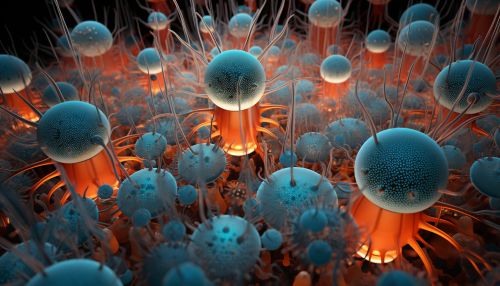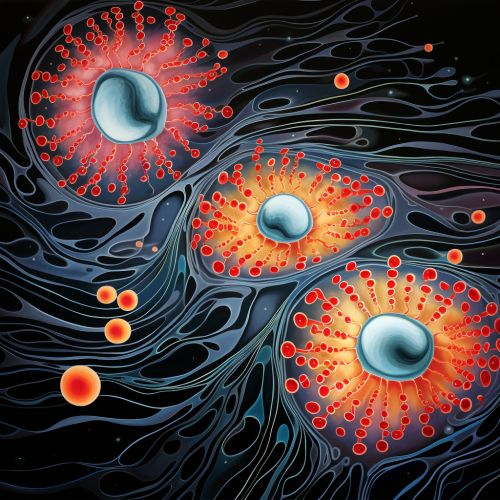Cellular Senescence
Introduction
Cellular senescence is a biological process characterized by the cessation of cell division. It is a state of permanent cell cycle arrest, but unlike cells that have undergone terminal differentiation, senescent cells can remain metabolically active for extended periods. The concept of cellular senescence was first proposed by Leonard Hayflick and Paul Moorhead in the 1960s, who observed that normal human fibroblasts in culture have a limited capacity to divide before entering a state of irreversible growth arrest, a phenomenon now referred to as the Hayflick Phenomenon.


Mechanisms of Cellular Senescence
Cellular senescence can be triggered by a variety of factors, including telomere shortening, DNA damage, oxidative stress, and oncogene activation. These triggers induce a complex signaling network that leads to the stable arrest of the cell cycle.
Telomere Shortening
Telomeres are repetitive DNA sequences at the ends of chromosomes that protect the genomic DNA from degradation. With each cell division, telomeres shorten until they reach a critical length, at which point the cell can no longer divide and enters a state of senescence. This process, known as replicative senescence, is thought to be a primary mechanism of aging and age-related diseases.
DNA Damage
DNA damage can also induce cellular senescence. This can occur as a result of exposure to radiation, chemical mutagens, or normal metabolic processes that generate reactive oxygen species. The DNA damage response (DDR) pathway recognizes and repairs DNA damage. However, if the damage is too severe or the repair mechanisms are overwhelmed, the DDR can trigger cellular senescence to prevent the propagation of damaged DNA.


Oxidative Stress
Oxidative stress, caused by an imbalance between the production of reactive oxygen species (ROS) and the cell's ability to detoxify these reactive intermediates, can also induce cellular senescence. ROS can damage cellular components, including DNA, proteins, and lipids, and prolonged exposure to oxidative stress can lead to irreversible cellular damage and senescence.
Oncogene Activation
Oncogenes are genes that have the potential to cause cancer. When these genes are activated, they can stimulate uncontrolled cell proliferation. However, cells have evolved mechanisms to prevent oncogene-induced transformation, one of which is oncogene-induced senescence (OIS). OIS is a protective mechanism that permanently arrests the cell cycle in response to oncogenic signals, thereby preventing the propagation of potentially cancerous cells.
Senescence-Associated Secretory Phenotype (SASP)
Senescent cells can secrete a variety of factors, including cytokines, chemokines, growth factors, and proteases, collectively known as the senescence-associated secretory phenotype (SASP). The SASP can have both beneficial and detrimental effects on the tissue microenvironment. On one hand, it can stimulate immune clearance of senescent cells and tissue repair. On the other hand, chronic exposure to the SASP can promote inflammation, tissue damage, and even cancer.


Role in Aging and Disease
Cellular senescence is a double-edged sword. While it serves as a protective mechanism against cancer, it also contributes to aging and age-related diseases. Accumulation of senescent cells over time can lead to tissue dysfunction and various pathological conditions, including cancer, cardiovascular disease, diabetes, and neurodegenerative diseases.
Therapeutic Implications
Given the role of cellular senescence in aging and disease, strategies to selectively eliminate senescent cells or modulate the SASP are being explored as potential therapies. These strategies, collectively known as senotherapy, hold promise for the treatment of age-related diseases and the extension of healthspan.


